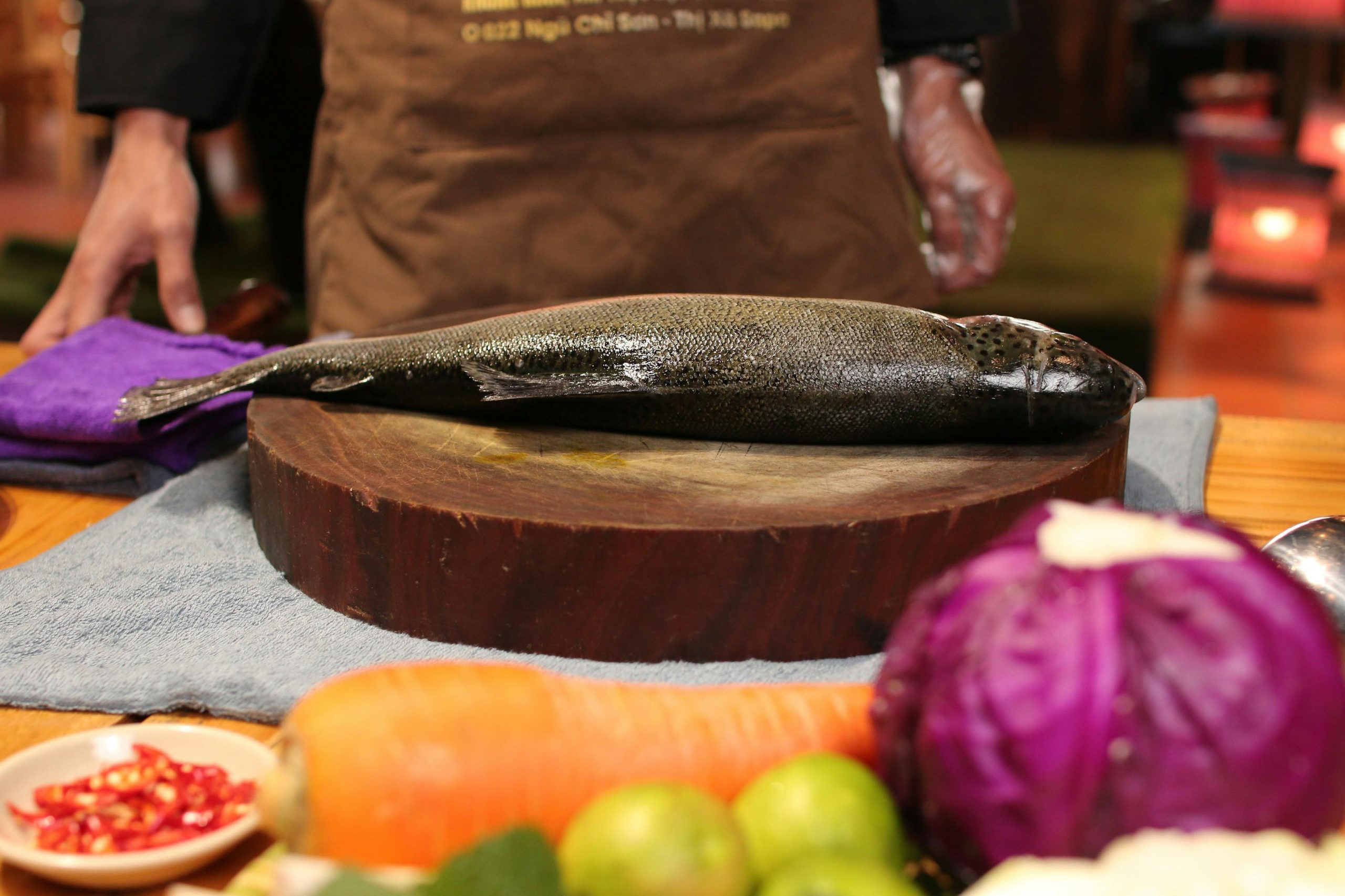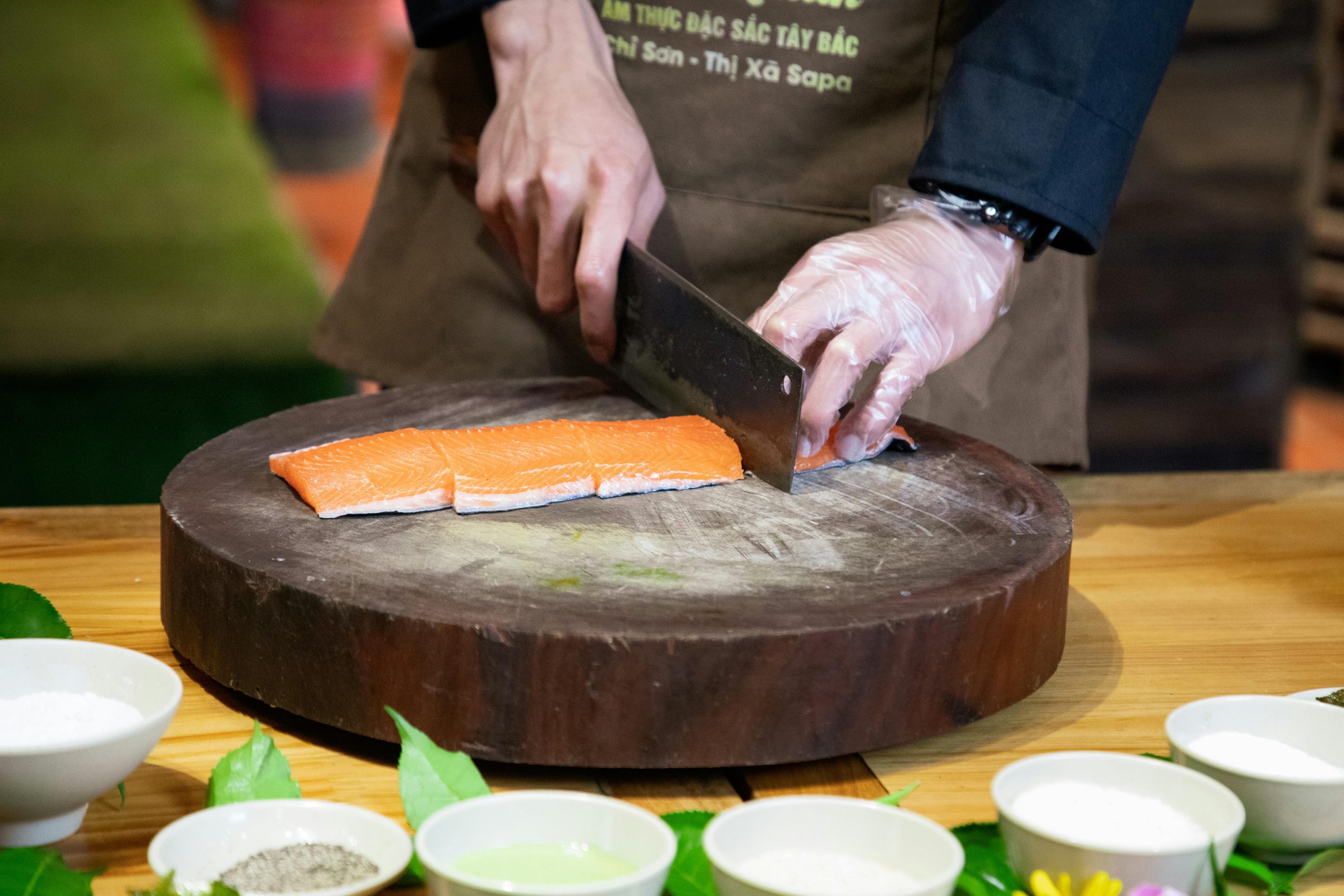Ad Blocker Detected
Our website is made possible by displaying online advertisements to our visitors. Please consider supporting us by disabling your ad blocker.
Have you ever wondered if pressure cookers are supposed to hiss? Pressure cookers can be an amazing tool in the kitchen, but the hissing sound they sometimes make can be a bit intimidating. In this article, we will explore whether or not it is normal for pressure cookers to hiss, and what the hissing sound actually means. So, if you’ve ever found yourself wondering about this common kitchen appliance, read on to discover the truth behind pressure cooker hissing!

The Purpose of a Pressure Cooker
Introduction to pressure cookers
Pressure cookers are versatile kitchen appliances that have gained popularity in recent years. They are designed to cook food quickly and efficiently by trapping steam inside the cooking pot, which raises the pressure and allows for faster cooking times. Whether you are a busy professional or a home cook looking to save time in the kitchen, a pressure cooker can be a valuable addition to your culinary arsenal.
How pressure cookers work
Pressure cookers work by creating a sealed environment in which food is cooked under pressure. When the pot is heated, the liquid inside boils and produces steam, which increases the pressure within the cooker. This increase in pressure raises the boiling point of water, allowing the food to cook at higher temperatures than traditional cooking methods. The trapped steam also helps to retain moisture and flavor, resulting in tender and flavorful dishes.
Benefits of using a pressure cooker
There are numerous benefits to using a pressure cooker. Firstly, pressure cooking is a time-saving method, as it significantly reduces cooking times compared to conventional cooking methods. This is particularly useful when preparing dishes such as stews, soups, and beans that typically require long simmering times. Additionally, pressure cooking preserves the nutrients in food better than other cooking methods, thanks to the shorter cooking times and reduced evaporation. Lastly, pressure cookers are energy-efficient, as they require less time and heat to cook food, saving both time and money in the long run.
Understanding the Hissing Sound
Explanation of the hissing sound
The hissing sound that you may hear when using a pressure cooker is perfectly normal and is, in fact, an essential part of the cooking process. The hissing sound is a result of the steam escaping from the pressure cooker through the pressure release valves. This release of steam helps regulate the pressure inside the cooker and prevents it from becoming dangerously high.
Causes of hissing in pressure cookers
There are several factors that can contribute to the hissing sound in a pressure cooker. One common cause is the build-up of pressure inside the cooker. As the pressure increases, the excess steam is released through the pressure release valves, creating the hissing sound. Another possible cause is a faulty seal or gasket that may allow steam to escape continuously, leading to a more persistent hissing sound.
Importance of the hissing sound
While the hissing sound may be slightly alarming to some, it is actually an important safety feature in pressure cookers. The hissing sound indicates that the pressure cooker is functioning correctly and that the pressure is being released. Without this release of steam, the pressure inside the cooker could rise to dangerous levels and potentially cause an explosion. Therefore, it is crucial to understand and embrace the hissing sound as a sign that your pressure cooker is working as intended.
Pressure and Release Valve
Role of the pressure valve
The pressure valve is a crucial component of a pressure cooker that helps regulate the pressure inside the cooker. It is designed to release steam when the pressure reaches a certain level, preventing the pressure from rising too high. The pressure valve often features a weight or a pressure indicator to indicate the pressure inside the cooker. It is important to follow the manufacturer’s guidelines regarding the appropriate pressure levels for different types of food to ensure safe and effective cooking.
Role of the release valve
The release valve, also known as the pressure release mechanism or pressure release knob, is responsible for manually releasing the steam from the pressure cooker. It is typically located on the lid of the cooker and can be adjusted to control the rate at which steam is released. The release valve allows for a gradual release of pressure, which is important when cooking delicate foods that require a gentle cooking process.
How to properly use the valves
To ensure safe and effective use of a pressure cooker, it is essential to understand how to properly use the pressure and release valves. Before cooking, make sure the pressure valve is in the correct position according to the recipe or manufacturer’s instructions. Once the cooking process is complete, turn off the heat and let the pressure naturally release for a specified period of time. Afterward, you can use the release valve to quickly release any remaining pressure, but always exercise caution and follow the manufacturer’s guidelines to prevent accidents.
Types of Pressure Release Mechanisms
Natural pressure release
Natural pressure release, also known as the natural release method, is a technique where the pressure inside the cooker is allowed to decrease naturally over a period of time. This is done by turning off the heat and letting the pressure cooker sit for a specified duration, usually indicated in the recipe or provided by the manufacturer. Natural pressure release is commonly used when cooking delicate foods such as seafood or when a longer cooking time is required.
Quick pressure release
Quick pressure release, also known as the quick release method or cold water release, is a technique where the pressure inside the cooker is rapidly released by using the release valve or placing the cooker under cold running water. This method is typically employed when you need to stop the cooking process immediately or when the recipe calls for a quick release of pressure. It is important to exercise caution when using the quick release method, as the sudden release of steam can cause burns or accidents if not done correctly.
Difference between the two
The main difference between natural pressure release and quick pressure release lies in the time it takes to release the pressure. Natural pressure release allows for a gradual release of steam, which can take anywhere from a few minutes to over an hour depending on the recipe. Quick pressure release, on the other hand, provides an immediate release of pressure in a matter of seconds. The choice between the two methods depends on the recipe requirements, the type of food being cooked, and personal preference.

Hissing Control and Safety Measures
Maintaining proper pressure levels
To ensure safe cooking and minimize excessive hissing, it is crucial to maintain proper pressure levels in the pressure cooker. This can be achieved by following the recommended cooking times and pressure settings provided by the recipe or the pressure cooker manufacturer. It is also important to monitor the pressure indicator or weight and adjust the heat accordingly to maintain a steady pressure level throughout the cooking process.
Preventing excessive hissing
Excessive hissing can be a result of several factors, including improper sealing of the cooker, a faulty gasket, or inadequate pressure release. To prevent excessive hissing, always check that the pressure cooker’s sealing ring or gasket is in good condition and properly fitted before cooking. Additionally, ensure that the pressure release valves are clear of any obstructions and are functioning correctly. Regular cleaning and maintenance of the pressure cooker can help prevent these issues and ensure optimal performance.
Tips for safe pressure cooking
To ensure safe and successful pressure cooking, it is important to follow these tips:
- Always read and follow the manufacturer’s instructions for your specific pressure cooker model.
- Do not overfill the pressure cooker; follow the recommended fill line.
- Use the appropriate amount of liquid for the recipe to prevent scorching or burning.
- Never force the lid open; always allow the pressure to release naturally or use the quick release method.
- Keep the pressure cooker away from children and ensure they are educated about its potential dangers.
- Regularly inspect and clean the pressure cooker’s components, including the valves and sealing ring, to maintain proper functioning and safety.
Troubleshooting Hissing Issues
Common reasons for excessive hissing
If you are experiencing excessive hissing during pressure cooking, several common reasons might be causing the issue. These can include:
- A faulty or worn-out gasket: The gasket is responsible for creating a tight seal, and if it is damaged or worn out, it may lead to steam leakage.
- Incorrect sealing: Ensure that the pressure cooker is properly sealed before cooking by aligning the arrows or markers on the lid and the base of the cooker.
- Overheating: Cooking at excessively high heat or for too long can lead to increased steam production and hissing.
- Blockage in the release valves: Make sure that the pressure release valves are free of any blockages, such as food particles, which can prevent the steam from escaping.
How to fix hissing problems
To fix hissing problems in your pressure cooker, try the following troubleshooting steps:
- Check the sealing ring: If the gasket is worn out or damaged, replace it with a new one according to the manufacturer’s instructions.
- Verify proper sealing: Ensure that the lid is properly aligned and securely closed. Adjust the locks or latches if necessary.
- Adjust cooking heat: Reduce the heat to a lower setting to prevent excessive steam production and hissing. Follow the recommended cooking times and heat levels provided in the recipe.
- Clean the release valves: If the release valves are blocked, remove any debris or food particles by gently rinsing them under running water. Be sure to consult the manufacturer’s instructions before removing any parts.
When to contact customer support
If you have tried troubleshooting the hissing issues in your pressure cooker and are still experiencing problems, it may be necessary to contact customer support. Manufacturers often provide customer service helplines or online resources where you can seek assistance or schedule repairs. Avoid attempting any repairs or modifications yourself, as this may void the warranty or pose a safety risk.

Different Pressure Cooker Brands
Overview of popular pressure cooker brands
There are several reputable pressure cooker brands on the market, each offering unique features and functionalities. Some popular brands include Instant Pot, Ninja Foodi, Crock-Pot, and Fagor. These brands have established themselves as leaders in the industry by consistently delivering high-quality pressure cookers that meet the needs and preferences of different users.
Comparison of hissing features
When comparing pressure cooker brands, it is important to consider their hissing features. Some pressure cookers may hiss more loudly than others due to differences in design and construction. Additionally, certain models may offer more precise pressure control, allowing for minimal hissing during the cooking process. Reading user reviews and researching the specific features of each brand can help you determine which pressure cooker is best suited to your preferences.
Choosing the right brand for your needs
When choosing a pressure cooker brand, it is important to consider your specific needs and requirements. Factors to consider may include the size of the pressure cooker, available cooking functions, ease of use, and overall durability. Additionally, reading customer reviews and seeking recommendations from trusted sources can provide valuable insights into the performance and reliability of different brands. Ultimately, selecting the right brand will depend on your personal preferences and the features that are most important to you.
Benefits of Hissing for Cooking
Enhanced flavor infusion
The hissing sound in a pressure cooker is a sign that the cooking process is underway and that the flavors are infusing into the food. The high pressure and trapped steam help to break down tough fibers in meats and vegetables, resulting in tender and flavorful dishes. The hissing sound serves as a reminder that the pressure cooker is working to maximize the flavor potential of your meals.
More efficient cooking
The hissing sound in a pressure cooker indicates that steam is being generated and trapped inside the cooker. This trapped steam creates a high-pressure environment that allows food to cook faster and more efficiently than traditional methods. The increased pressure and temperature can significantly reduce cooking times, making pressure cookers a time-saving tool in the kitchen.
Indication of proper pressure
The hissing sound is a reliable indicator that the pressure cooker is maintaining the appropriate pressure levels for safe and efficient cooking. When the pressure is too low, there may be little to no hissing sound, indicating the need for adjustments. On the other hand, excessive hissing may suggest that the pressure cooker is operating at too high of a pressure. By paying attention to the hissing sound, you can ensure that your pressure cooker is functioning correctly.
Recipes Suitable for Pressure Cooking
Types of dishes ideal for pressure cooking
Pressure cooking is suitable for a wide range of dishes, particularly those that require tenderizing or long cooking times. Some popular dishes that lend themselves well to pressure cooking include stews, soups, roasts, beans, risottos, and curries. These dishes often benefit from the high-pressure environment, as it helps break down tough proteins and infuse flavors quickly and efficiently.
Recipe recommendations
Here are a few recipe recommendations to get you started with pressure cooking:
- Beef Stew: A hearty beef stew cooked in a pressure cooker yields tender meat and flavorful vegetables in a fraction of the time compared to traditional stovetop methods. The high pressure helps to lock in the flavors and create a rich and satisfying stew.
- Chicken Curry: Pressure cooking chicken curry allows the flavors to develop quickly, resulting in a flavorful and tender dish. The high-pressure environment also helps to infuse the spices into the meat, creating a delicious and aromatic curry.
- Vegetable Soup: Pressure cooking vegetable soup helps to retain nutrients and flavors while reducing the cooking time. The high pressure breaks down the vegetables, resulting in a silky smooth soup packed with flavor.
Tips for adapting recipes
When adapting recipes for pressure cooking, it is important to consider the cooking time and the amount of liquid needed. As pressure cooking reduces cooking times, it is necessary to adjust the cooking time specified in traditional recipes. Additionally, pressure cooking requires less liquid compared to traditional cooking methods, as the steam generated is trapped inside the cooker. Be sure to follow the manufacturer’s guidelines and make the necessary adjustments to ensure successful pressure cooking.
Maintaining and Cleaning a Pressure Cooker
Proper cleaning techniques
Proper cleaning and maintenance are important for ensuring the longevity and performance of your pressure cooker. After each use, make sure to clean the cooking pot, lid, sealing ring, and release valves. Most pressure cookers have dishwasher-safe components, but always refer to the manufacturer’s instructions to avoid damaging any parts. Washing the parts in warm soapy water and using a sponge or soft brush to remove any residue is usually sufficient for regular maintenance.
Preventing hissing-related issues
To prevent hissing-related issues, it is important to keep your pressure cooker clean and perform regular maintenance. Check the sealing ring for any signs of wear or damage and replace it if necessary. Inspect the release valves and ensure that they are free of any obstructions that may restrict the flow of steam. Regular cleaning and maintenance will help ensure that your pressure cooker operates smoothly and reduces the risk of excessive hissing or other performance issues.
Longevity of your pressure cooker
With proper care and maintenance, a pressure cooker can last for many years. Follow the manufacturer’s instructions for cleaning, use, and maintenance to ensure its longevity. Avoid using abrasive cleaners or harsh chemicals that may damage the components. Regularly inspect the pressure cooker for any signs of wear or damage, and promptly address any issues to prevent further damage. By taking care of your pressure cooker, you can enjoy its benefits and delicious meals for years to come.
In conclusion, pressure cookers are versatile and efficient kitchen appliances designed to save time and enhance the flavor of your meals. Understanding the hissing sound, the role of the pressure and release valves, and the different pressure release mechanisms will help you safely and effectively use your pressure cooker. By troubleshooting hissing issues, choosing the right brand, and following proper cleaning and maintenance techniques, you can ensure the longevity and optimal performance of your pressure cooker. With a wide range of recipes suitable for pressure cooking, you can explore new culinary adventures while saving time in the kitchen.

